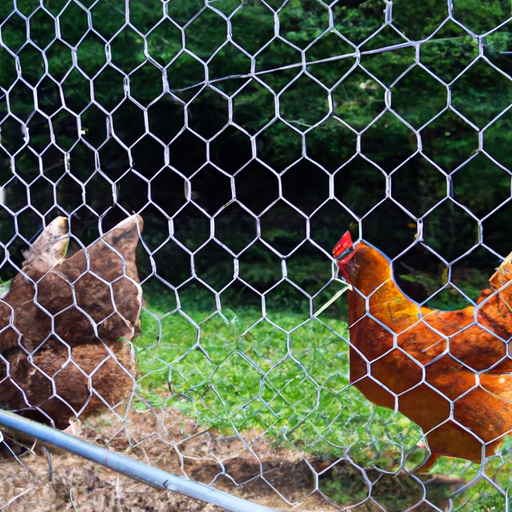So you’ve decided to add some new feathered friends to your existing flock of chickens? That’s great news! But introducing new chickens to an established group can be a bit of a delicate process. You want to ensure that the newcomers are welcomed without causing any unnecessary stress or tension among the existing members. In this article, we will explore the best practices for introducing new chickens to your existing flock safely, ensuring a harmonious coop and happy chickens all around.
Introducing New Chickens to an Existing Flock Safely
Understanding the Pecking Order
When introducing new chickens to an existing flock, it is important to understand the concept of the pecking order. Chickens have a social hierarchy within their flock, and introducing new members disrupts this established order. The pecking order determines which chicken is dominant and which are submissive, and it is established through pecking and other aggressive behaviors. By understanding the pecking order, you can better manage the integration process and minimize potential conflicts.
Quarantining New Chickens
Before introducing new chickens to your existing flock, it is crucial to quarantine them first. This step is vital to prevent the spread of diseases or parasites to your healthy flock. Quarantine typically involves isolating the new chickens in a separate coop or area for a minimum of two weeks. During this time, you should observe the new chickens for any signs of illness or parasites. This precautionary measure helps ensure the health and well-being of your entire flock.
Preparing the Introduction Area
Creating a suitable introduction area is fundamental to a successful integration process. The introduction area should be a neutral zone where the chickens can interact without territorial disputes. It is advisable to separate the space with a wire fence or use a temporary enclosure within the existing coop or run. This arrangement allows the chickens to see and hear each other, gradually becoming familiar without direct contact. Providing ample hiding spots and perches in the introduction area can also help reduce aggression.
Introducing New Chickens Gradually
A gradual introduction is key to avoiding conflicts between new and existing flock members. Start by allowing the chickens to see and interact through the wire fence for a few days. Next, you can let them have supervised face-to-face encounters for short periods, gradually increasing the duration over time. It is crucial to closely monitor their behavior during these interactions and intervene if any aggression occurs. By introducing the new chickens gradually, you give the existing flock time to adjust and minimize potential harm.
Supervising the Initial Interactions
When the new and existing chickens are ready for face-to-face interactions, it is essential to supervise these initial encounters closely. Be prepared to intervene if any aggressive behavior escalates, such as pecking or chasing. Having a spray bottle on hand can be helpful to redirect any aggressive behaviors without causing harm. The goal is to allow the chickens to establish their pecking order naturally, but it is important to ensure their safety during this process.
Monitoring and Providing Enough Resources
During the integration process, it is crucial to monitor the chickens’ access to resources such as food, water, and nesting areas. Chicken aggression can often arise from competition for these essential resources. To minimize conflicts, it is advisable to provide multiple feeding and watering stations, ensuring that all chickens have equal access. Sufficient nesting areas should also be available to prevent overcrowding and territorial disputes. Regularly check that all chickens are able to access these resources without interference.
Addressing Aggression and Bullying
Sometimes, despite the best efforts, aggression and bullying may still occur during the integration process. It is crucial to address these issues promptly to ensure the well-being of all chickens. If one chicken is consistently aggressive or bullying others, it may be necessary to isolate or rehome that individual for the sake of the flock’s harmony. Additionally, adding visual barriers or increasing the number of hiding spots and perches in the coop can help reduce aggression and provide temporary relief for the targeted chickens.
Providing Multiple Food and Water Sources
To minimize conflicts over resources, it is essential to provide multiple food and water sources for your flock. This ensures that each chicken has access to nourishment without having to compete with others. Place the food and water stations in different locations throughout the coop or run, creating enough space for chickens to feed and drink peacefully. Regularly refill and clean these stations to maintain hygiene and prevent the spread of diseases.
Ensuring Sufficient Space
Adequate space is essential for a harmonious flock dynamic. Overcrowding can lead to increased stress, aggression, and territorial disputes among chickens. Provide sufficient space in the coop and run to allow each chicken to move freely, stretch their wings, and establish their own territory. The general guideline is to allow four square feet of indoor space per chicken and at least ten square feet of outdoor space in the run. By providing enough space, you promote a healthier and calmer flock environment.
Maintaining a Clean Coop and Surroundings
Regular maintenance and cleanliness play a crucial role in maintaining a healthy and harmonious flock. Ensure that the coop is cleaned and sanitized regularly, removing any waste build-up or potential breeding grounds for parasites. Keep the surroundings of the coop free from debris and standing water to prevent attracting pests or insects. A clean and hygienic environment helps prevent the spread of diseases and ensures the overall well-being of your chickens.
Introducing new chickens to an existing flock requires careful planning and consideration. By understanding the pecking order, quarantining new chickens, creating a suitable introduction area, and gradually introducing them, you can successfully integrate them into your flock. Active supervision during initial interactions, providing enough resources, ensuring sufficient space, and maintaining cleanliness are essential components of a safe and healthy integration process. With these best practices in mind, you can ensure a smooth transition for your flock and promote a harmonious living environment for all chickens involved.




